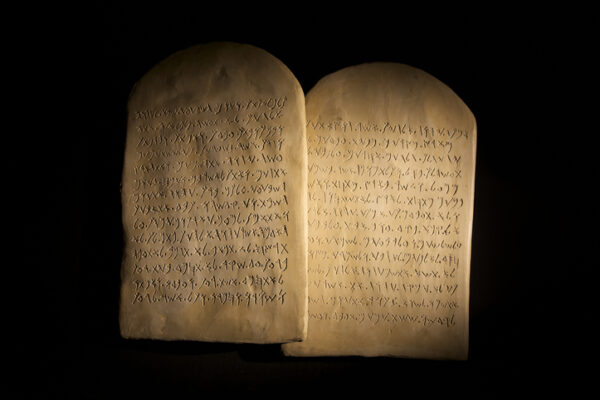At a recent press conference in Houston, a team of archaeologists announced a startling new find. They discovered an inscribed tablet from ancient Israel, well over 3,000 years old, that they believed could prove that the Hebrew Bible, or Old Testament, was written centuries before most contemporary scholars believe it was. It is, they claimed, “the most important inscription ever found in Israel.”
Social media quickly revved into high gear. The rest of us would be wise to proceed more slowly.
When people ask me the age-old question of whether a biblical account that looks to be historical matches up well with other evidence, like this newly discovered inscription, my answer is almost always “well, sort of but not exactly.”
The inscription rests inside a folded lead tablet, a little less than an inch square, and was deciphered through a series of high-tech scans. It was found while sifting piles of dirt that were excavated years ago from Mount Ebal in the West Bank. What it purportedly says turns out to be rather a downer: “Cursed, cursed, cursed – cursed by the deity YHW (the Lord). You will die cursed. Cursed you will surely die. Cursed by YHW – cursed, cursed, cursed.”
This “cursed” language is significant to biblical scholars because it seems to echo Deuteronomy 11:29, which says that when the Israelites enter the promised land, they are to “place the blessing on Mount Gerizim and the curse on Mount Ebal” (the blessing for obedience to God and the curse for disobedience). The inscription also appears to use a very early form of the Hebrew alphabet, from around 1200 B.C. or even earlier, and it includes the Israelite name for God, or YHW.
All of this, according to the team behind the discovery, proves that substantial portions of the Hebrew Bible were probably written at this point in history, more than 3,000 years ago. This is a minority view within scholarly circles, but if the researchers are right, it could re-orient the whole field.
With finds like this, though, caution is always in order. For one thing, we haven’t seen the data yet. The researchers are working on a peer-reviewed publication that will include much more information on how they reached their findings. Until we see their data, however, we are left with only their interpretations. We also should be cautious about how easily debates about the age of the Hebrew Bible shade into implications about the truth of its metaphysical claims. Those questions have to be kept separate.
Most importantly, we need to be wary of the power of appealing narratives. Many of the announced findings, even if accurate, don’t necessarily prove what the researchers say they do – that the Hebrew Bible is older than what most believe.
In this case, the time period of the tablet is still up in the air. The researchers dated it, in part, based on other artifacts recovered at the Mount Ebal site, but archaeologists disagree intensely about how to date and understand those finds. The dating also relies on epigraphic analysis – examining the type of script used – but this method of dating is notoriously tricky until you get into later periods.
If it turns out that there really was someone in this location anywhere close to 1200 B.C. invoking the name of YHW in an alphabetic script, that would be an extraordinary discovery. I hope it pans out. I hope the inscription proves to be as old as they claim and says exactly what they think it does. But even this would not automatically mean that there were Hebrew scribes at this time writing the kinds of extended literary creations found in biblical texts. There’s a big difference between a short curse and the marvelous eloquence of the Hebrew Bible.
If everything they’re saying is true, in other words, the answer to that age-old question will still be “well, sort of but not exactly.”
Bruce Wells is an associate professor of Middle Eastern studies in the College of Liberal Arts at The University of Texas at Austin.
A version of this op-ed appeared in the Dallas Morning News, Abilene Reporter News, San Antonio Express News, Lubbock Avalanche Journal, Waco Tribune Herald, Yahoo! News, MSN, Austin American-Statesman, and the Houston Chronicle.




